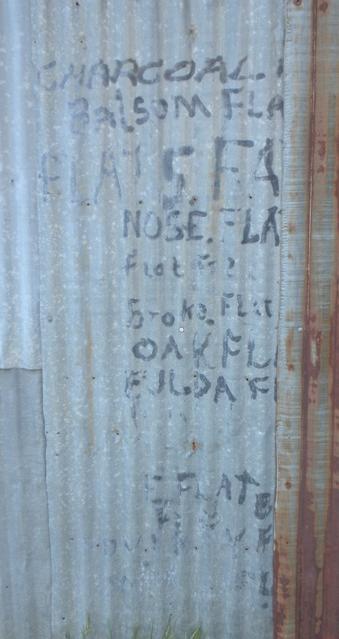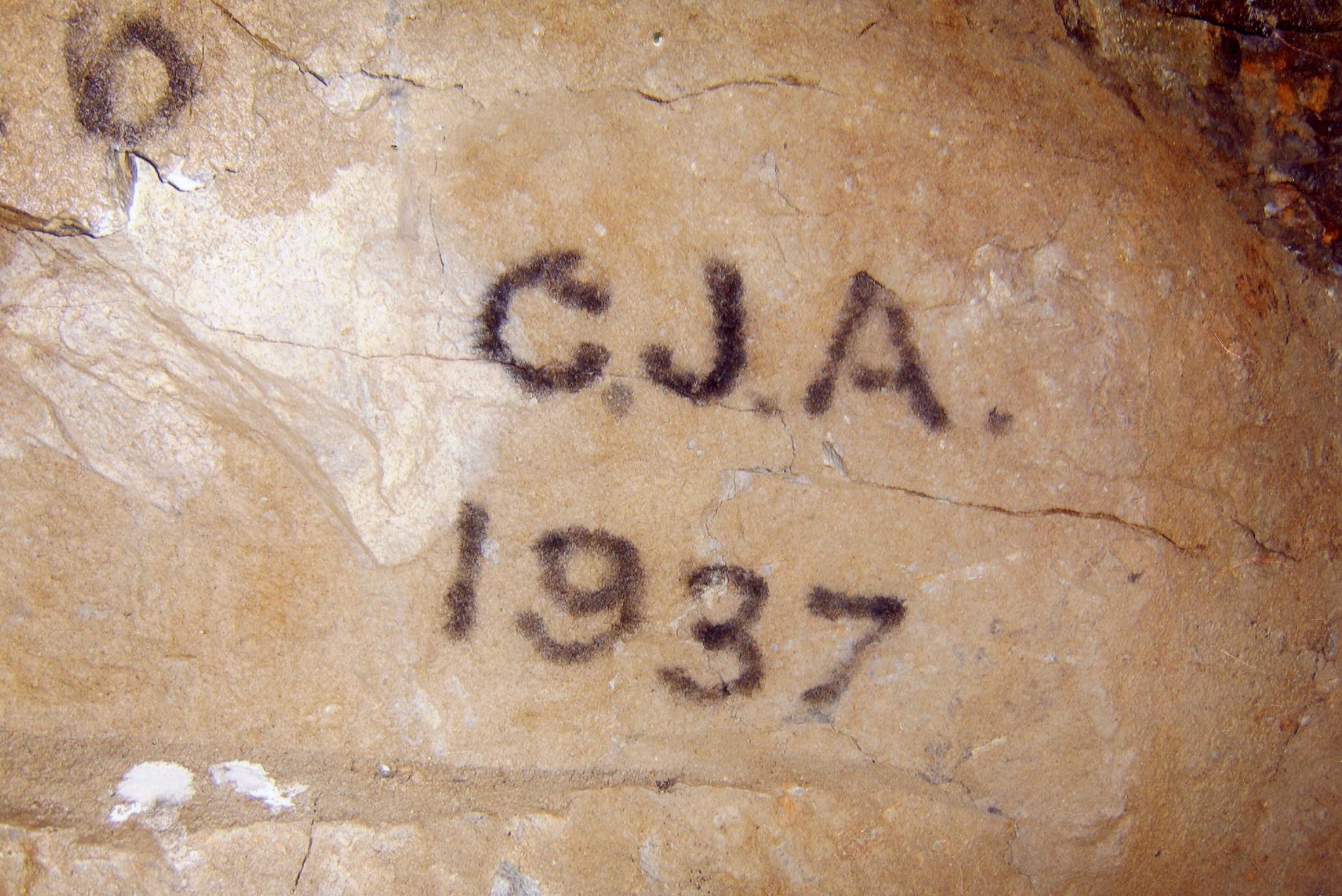
The side of the author’s garage. It is apparent that this piece of tin was salvaged from another location. This miner must have had time to kill and was thinking of as many kinds of “flats” as he could. What can be deciphered: Charcoal [flat]*, Balsam [flat]*, Flats Fat, Nose Flat, Flat Feet, Broke Flat, Oak Flat*, E [flat], B flat, piano flat.
* indicates a geographical location.
Carbide lamps are an icon of underground mining. Introduced in 1901, they were such a major improvement over candles that they were universally adopted by the U.S. Mining Industry.
Miners, being a utilitarian lot, soon found other uses for their carbide lamps besides underground lighting. They were handy for lighting cigarettes and fuses. The soot created by their flame adheres to rock, tin and other surfaces creating a permanent black mark. This ability to mark rock surfaces was especially convenient in the underground setting. The lamps were commonly used for day-to-day tasks such as marking where the next round of holes should be drilled. Mining engineers and surveyors primarily used lamp soot for their underground markings.

Underground at the Colorado Mine in the Alleghany District. Charlie Ayers was a mining engineer at this mine in the 1930s. Just as they are today, initials were the most common thing drawn. Photo by geologist Raymond Witkkopp 2006.
The switch from carbide to electric cap lamps was not nearly as quick or universal as the switch from candles to carbide. Here, in the Alleghany Mining District, electric lamps were first introduced in the early 1920s. A few of the mines in the district switched to electric lamps early on, but some mines, like the Sixteen to One, did not switch until the early 1960s. Rural mines without electricity also favored carbide lamps.
Many miners preferred carbide lamps over electric lamps. Carbide lamps were much easier to wear while working compared to cumbersome electric lamps with their heavy battery packs and electrical cords that got in the way. (Newer LED lamps, no longer have the battery pack and cord).
Naturally, being in possession of a handy marking tool, many miners drew or wrote with their lamps. For lack of a better term we’ve tagged this art-form as “carbide graffiti”. Our favorite example (found so far) is on the 800 foot level of the Sixteen to One Mine where the hanging wall protrudes into the travel-way. A miner (who no-doubt had hit his head) wrote the word STARS and drew little stars (that look like asterisks) on the protrusion. The photos in this article provide a few other examples. This lost art-form can be found in most historical mining areas. Start looking and who knows what you’ll find! To see more Carbide Graffiti images go to https://www.undergroundgold.org/post/carbide-graffiti.
Article Provided courtesy of Underground Gold Miners Museum © 2013
The museum is always looking for other examples of carbide graffiti. Email undergroundgold33@gmail.com or call 530-287-3330.
Featured Articles

Storms Bring Heavy Rainfall and Local Disruptions →
December 22, 2025
Sierra County faces power outages and water issues amid heavy rainfall and storm warnings.
215 Animals Seized for Cruelty from Grass Valley Property →
December 22, 2025
Human Remains Found Near South Yuba Bridge in March Identified →
December 17, 2025
Transfer Station Burn Suspended After Community Concerns →
December 16, 2025
Sierra Hardware Plans Extensive Repairs After Flood Damage →
December 8, 2025